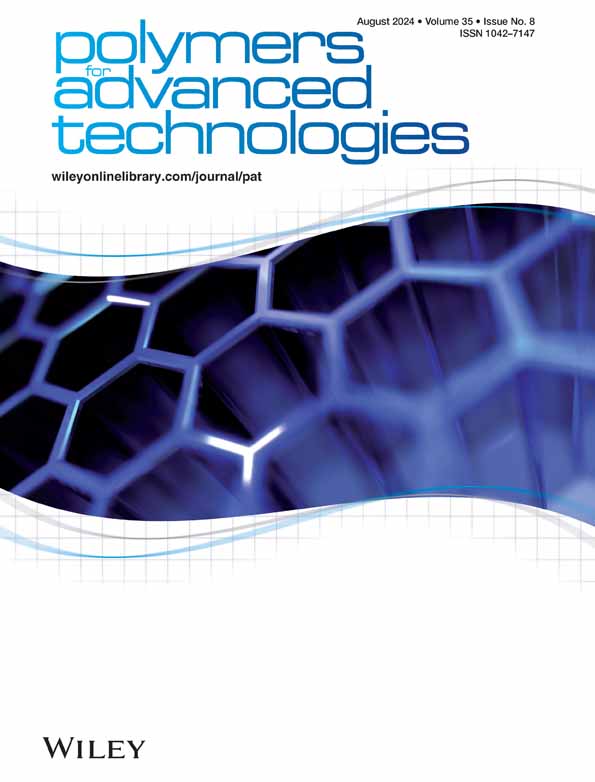多场耦合的喷射滑移机理和复合纤维制造
IF 3.4
4区 工程技术
Q2 POLYMER SCIENCE
引用次数: 0
摘要
旋转喷射纺丝过程涉及离心力、重力、温度、湿度和流场对纺丝溶液的共同作用。溶液从储存容器中流出后通过喷嘴喷出,在空气中拉伸形成复合纤维。目前,旋转喷射复合纺丝的研究主要集中在容器内纺丝溶液和喷射的动力学和运动学方面。然而,对于复合纺丝溶液在空气中表现出的运动和滑移现象还缺乏全面的探索。本文研究了纺丝溶液离开喷丝板孔径后聚合物与气体接触面之间的滑移现象。本文建立了一个滑移模型来分析聚合物在空气中的运动和受力情况。同时,通过理论分析,建立了多场耦合影响下复合纺丝溶液运动蒸发率的数学模型。对旋转喷射纺丝过程进行了数值模拟,获得了喷射出口速度云图。利用扫描电子显微镜分析了旋转喷射纺丝生产的复合纤维的形态,比较了不同环境和设备参数下的直径分布和表面质量。这项研究为制备高质量的复合纤维提供了一定的参考。本文章由计算机程序翻译,如有差异,请以英文原文为准。
Jet slipping mechanism and fabricating of composite fiber by multiple field coupling
The rotary jet spinning process involves the joint action of centrifugal force, gravity, temperature, humidity, and flow fields on the spinning solution. The solution is ejected through the nozzle after flowing from the storage container and stretched in the air to form a composite fiber. At present, the investigation of rotary jet composite spinning primarily focused on the dynamics and kinematics of the spinning solution and jet within the container. However, there is still a lack of comprehensive exploration into the motion and slip phenomena exhibited by the composite spinning solution in air. This article investigates the slip phenomenon between the polymer and the gas contact surface after the spinning solution leaves the spinneret aperture. A slip model is established to analyze the motion and force of the polymer in air. Meanwhile, a mathematical model for the evaporation rate of composite spinning solution motion under the influence of multi‐field coupling is established through theoretical analysis. A numerical simulation of the rotary jet spinning process was conducted to obtain clouds of jet exit velocity. The morphology of composite fibers produced by rotary jet spinning was analyzed using scanning electron microscopy, enabling a comparison of diameter distribution and surface quality under different environmental and equipment parameters. This study provides a certain reference for the preparation of high‐quality composite fibers.
求助全文
通过发布文献求助,成功后即可免费获取论文全文。
去求助
来源期刊

Polymers for Advanced Technologies
工程技术-高分子科学
CiteScore
6.20
自引率
5.90%
发文量
337
审稿时长
2.1 months
期刊介绍:
Polymers for Advanced Technologies is published in response to recent significant changes in the patterns of materials research and development. Worldwide attention has been focused on the critical importance of materials in the creation of new devices and systems. It is now recognized that materials are often the limiting factor in bringing a new technical concept to fruition and that polymers are often the materials of choice in these demanding applications. A significant portion of the polymer research ongoing in the world is directly or indirectly related to the solution of complex, interdisciplinary problems whose successful resolution is necessary for achievement of broad system objectives.
Polymers for Advanced Technologies is focused to the interest of scientists and engineers from academia and industry who are participating in these new areas of polymer research and development. It is the intent of this journal to impact the polymer related advanced technologies to meet the challenge of the twenty-first century.
Polymers for Advanced Technologies aims at encouraging innovation, invention, imagination and creativity by providing a broad interdisciplinary platform for the presentation of new research and development concepts, theories and results which reflect the changing image and pace of modern polymer science and technology.
Polymers for Advanced Technologies aims at becoming the central organ of the new multi-disciplinary polymer oriented materials science of the highest scientific standards. It will publish original research papers on finished studies; communications limited to five typewritten pages plus three illustrations, containing experimental details; review articles of up to 40 pages; letters to the editor and book reviews. Review articles will normally be published by invitation. The Editor-in-Chief welcomes suggestions for reviews.
 求助内容:
求助内容: 应助结果提醒方式:
应助结果提醒方式:


